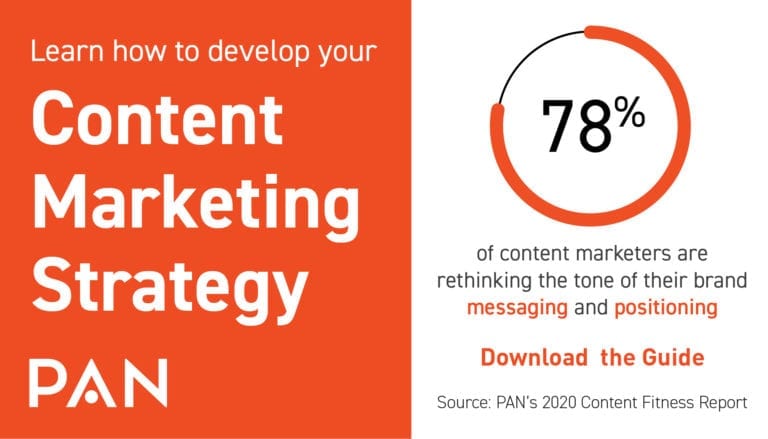This blog is the first in an upcoming series that will focus on the five-pillar approach to content marketing. Read below and follow along in the coming weeks to learn how to bring your content from ideation to execution, and how to measure its impact along the way.
Back in 2015, Seth Godin, known by some as the godfather of modern marketing, made a bold statement: “Content marketing is the only marketing left.”
What he meant is that marketers should only create content that their audience genuinely cares about and wants to consume, rather than place brand messages in front of the general public in the hopes they might resonate.
We have come a long way since then, and COVID-19 has only accelerated the shift toward the need for brands to create content that is intentionally designed to attract and retain your target audience’s attention, gain their trust and convert into customers. Forrester recently explained the fundamental change in B2B marketing: “It’s more than a combination of discrete trends such as rising bounce rates, declining open rates, or increasing churn; it’s that buyers now expect a fundamentally different relationship with your company.”
“[Content marketing] is more than a combination of discrete trends such as rising bounce rates, declining open rates, or increasing churn; it’s that buyers now expect a fundamentally different relationship with your company.”
First Things First: Take Inventory of Content Assets
When developing a content marketing strategy for your brand, the first step is to ‘discover’ your current content assets. Evaluate their strength with respect to your brand perception, competitive positioning and impact on inbound efforts.
This is your starting point and marks a time to set goals. Only by gauging the breadth and quality of your content across multiple departments – sales, marketing, customer experience – will you know what to improve to more effectively map content to audiences you need to reach and influence.
As you take stock, determine the specifics about where you are and what you want to gain from a content marketing strategy. Who are your competitors? How does the market refer to your brand? Who is your ideal customer profile? What is your brand reputation now and how do you want it to change in the future, if at all?
Begin to build out your personas using the data collected. Integrate them with your sales team and conduct in-depth customer interviews to define the ideal customers for your business. Figure out how they consume your content and gauge sentiment.
Put Your Content Marketing Knowledge to the Test:
Assessing Your Content Marketing Effectiveness
As you move through discovery, assess the approach to your content marketing strategy thus far to better understand what’s working and what’s not. Identify the gaps to inform a strategy around the most consumable types of content, which messages resonate best and ideal timing for delivery of that message.
What are the key metrics to measure in the assessment phase? Website traffic, shares, views, downloads, engagements on social media, conversions to trial, earned media success, use by sales reps, newsletter signups and word of mouth referrals. Once you have a good sense of what content assets you have and how they’re performing, you can start to use that insight to build trust with key audiences and execute on your new strategy.
Like what you’re reading? This blog is the first in a four-part series discussing all-things modern content marketing as part of a comprehensive, digitally agile framework PAN developed to serve as the cornerstone of your CM strategy. Data-driven and customer-centric, our five-pillar approach not only helps brands identify which content excites its audiences most but also answers why they are so hungry for it.




